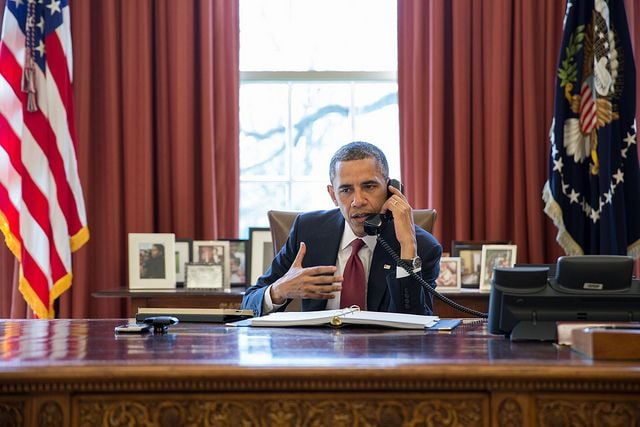President Obama did his best high school tennis coach impression yesterday in his policy-light, motivation-heavy speech on the economy. He hopes to move the needle on the American economy in a series of speeches focused on the middle-out theory, which argues that prosperity will come from a strong middle class.
“Good jobs. A better bargain for the middle class and folks working to join it. An economy that grows from the middle-out,” Obama said in his speech at Knox College in Galesburg, Ill.
The argument is pretty simple: The middle class spends money on cars and houses and local businesses. The wealthy just invest their money. (Not that investing isn’t sound business sense, it just doesn’t do as much to strengthen the local economy.) Income inequality only exacerbates dwindling consumer spending and, as a byproduct, the strain on local economies. This is a point relevant not only on a national level, but on a city level.
Take Manhattan, for instance, where more and more luxury high rises are popping up all over. Many of those apartments are crash pads or pieds-à-terres for wealthy out-of-towners who drop in, say, twice a month. Roughly 30 percent of more than 5,000 apartments on the East Side between Park Avenue and Fifth Avenue and 49th Street and 70th Street are “routinely vacant” more than 10 months a year, according to the American Community Survey.
Nearly a third of the neighborhood doesn’t actually live there. And it’s not like Manhattan is a lakeside community people flee to for the weekends.
Yes, New York is trying to maintain its status as a global city and that means more transient or semi-permanent residents who come to town for business. But how can you expect a city to thrive when the streets are empty? Parts of Midtown and the Upper East and West Sides feel like the financial district after normal work hours these days — the streets are dead, with the occasional delivery man speeding by on a bike. The majority of the super rich don’t contribute to the neighborhood. They just stroll in, say hello to their doorman and take the elevator to the 18th floor.
The crucial contribution of the middle class can also be seen in the less exceptional American metropolis of Pittsburgh. Steel City ranks fifth among U.S. cities in terms of economic upward mobility, according to a new study. Children raised in the lower fifth of income — their parents make less than $25,000 — had a 10 percent chance of climbing to a higher tax bracket as adults.
Stephen Herzenberg, executive director of the Harrisburg, Pa.-based Keystone Research Center, told the Associated Press that Pittsburgh’s success can be chalked up to a robust middle class and good schools. “This study is an endorsement of Pittsburgh’s willingness to invest in the future and its civic and communitarian traditions,” he said. Notice he didn’t credit the Carnegie heirs and their ilk for bringing back the city.
This gets back to the notion that equity is a strong indicator of economic success in cities. I know I rail on and on about that here, but I’ll ride that party bus until the wheels fall off: Equality at the neighborhood level means better economic success in cities. As President Obama said yesterday, “This growing inequality isn’t just morally wrong; it’s bad economics.”
The Equity Factor is made possible with the support of the Surdna Foundation.

Bill Bradley is a writer and reporter living in Brooklyn. His work has appeared in Deadspin, GQ, and Vanity Fair, among others.

















